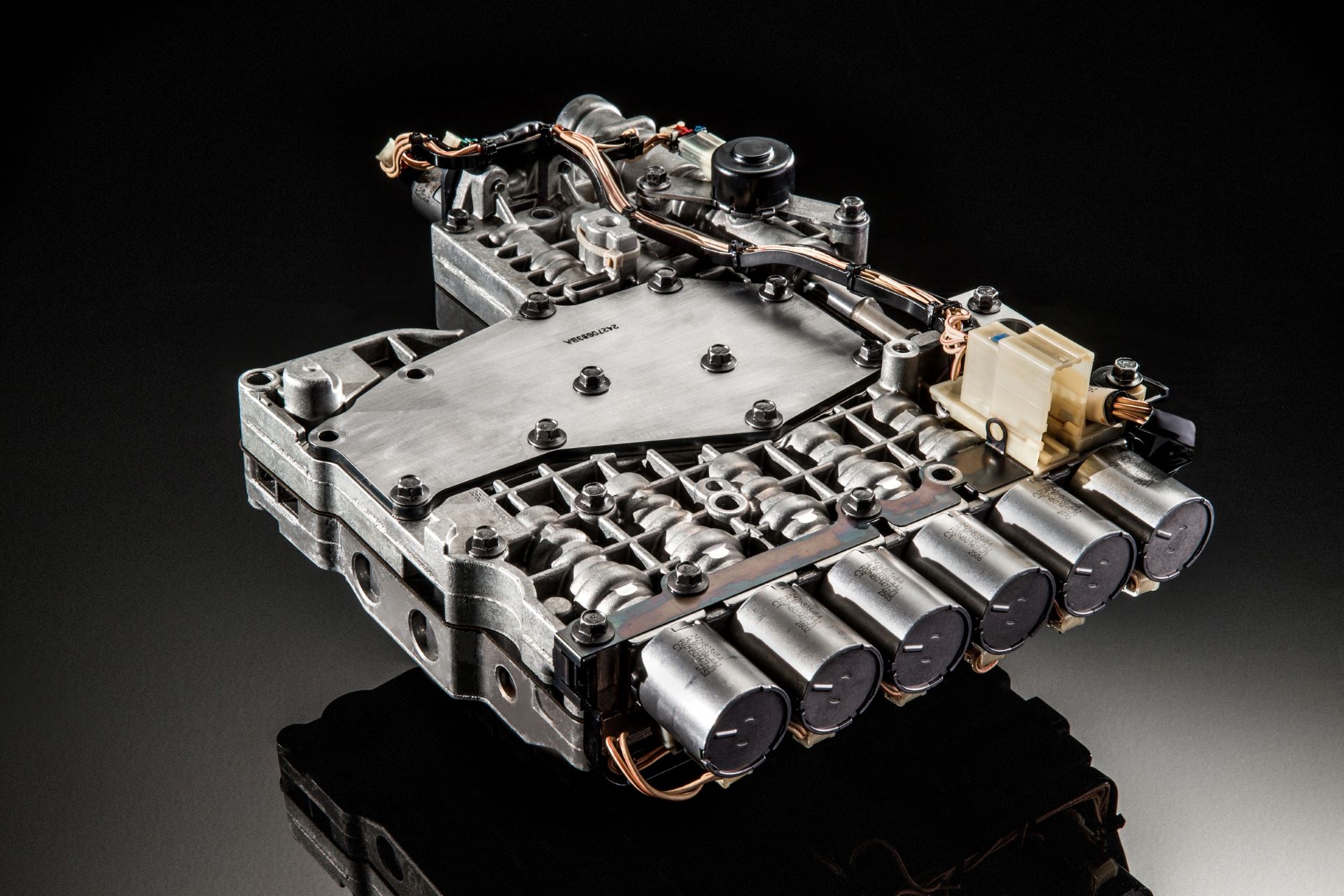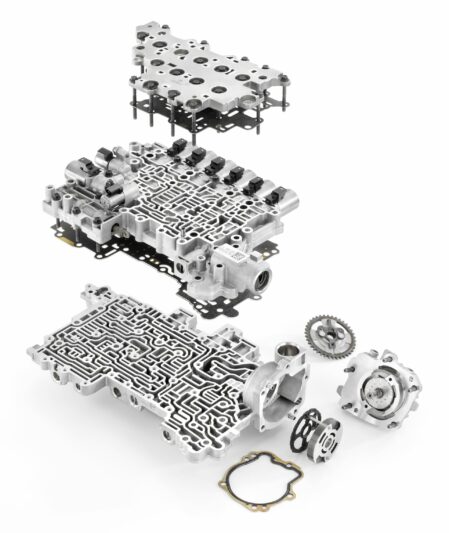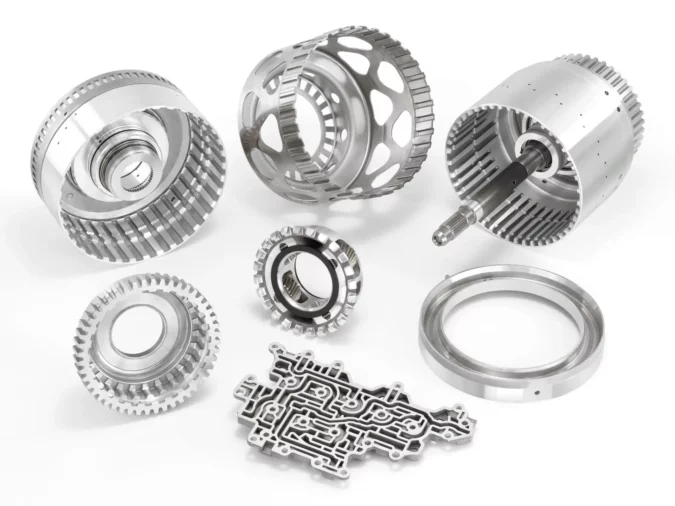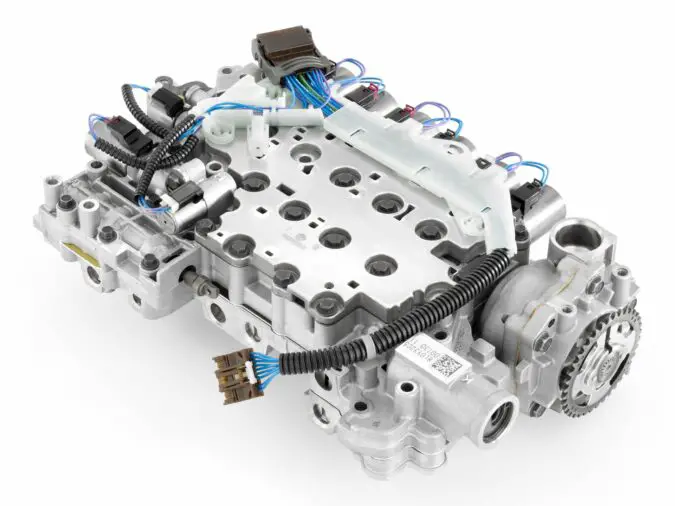One important transmission component is the transmission valve body, commonly referred to as the valve body. It is a hub of control where solenoids, passageways, and valves direct the flow of transmission fluid in the right direction.
Even if it doesn’t malfunction frequently, it is nevertheless a component subject to wear and tear. Continue reading to discover more about the transmission valve body, including its numerous varieties, when it has to be replaced, and more.
Inspecting your car as soon as you notice any of these signs is crucial to prevent further harm. A damaged transmission valve body can occasionally be repaired with a straightforward fix. In some circumstances, it might be essential to replace the transmission entirely.
Depending on the make and model of your car, the cost to replace the transmission can vary, but it is normally rather expensive. Do not delay in having a professional inspect your transmission if you suspect a faulty valve body.
- Transmission Valve Body
- How does it Work?
- What are the Symptoms?
- Where is it Located?
- What is inside a Transmission?
- Types of Valve Bodies
- What are the Causes?
- How to Prevent it?
Valve Body
Fluid is sent to particular regions inside the transmission by a network of passageways found in the valve body. As required, valves and check balls stop or let fluid flow to the various passageways.
Modern gearboxes use a lot of solenoid valves that are electronically controlled. It can be composed of either cast iron or cast aluminum and is often fastened to the case using bolts.
The transmission valve body has numerous fluid tubes cast into it for the various transmission hydraulic circuits. These channels are frequently referred to as wormholes or worm tracks. In the majority of transmissions, the valve body is found in the bottom of the case, inside the oil pan.
Inside A Transmission
The transmission is a sophisticated device that transforms the engine’s power into the torque delivered to the car’s drive wheels. The main parts of the transmission are as follows:
1. Gears
These are the primary components responsible for transmitting power from the engine to the drive wheels. They have various sizes and forms that offer various gear ratios.
2. Clutch
To detach the engine from the transmission, utilize the clutch. This enables seamless gear changes for the driver.
3. Torque Converter
This component serves as a fluid link between the engine and the transmission. In addition to allowing the engine to keep running while the car is stopped, it also evens out the power delivery when changing gears.
4. Automatic Transmission Valve Body
This part regulates the movement of transmission fluid and gear shifts. It has a system of channels, tubes, and valves that control fluid flow to the proper gears.
5. Planetary Gear Sets
Automatic transmissions employ planetary gear sets. They are made up of outer ring gear, many planet gears that mesh with the sun gear, and a center gear known as the sun gear. The transmission can offer multiple gear ratios due to this collection of gears.
6. Synchronizers
Prior to the engagement of the gears, this equipment is used to synchronize the speed of the gears. They avoid grinding or crunching sounds, ensuring smooth gear shifts.
7. Bearings And Bushings
These parts support the shafts and gears that carry power through the transmission. They lessen wear and friction on the moving components of the transmission.
8. Seals And Gaskets
These parts are employed to stop a transmission fluid leak from out of the transmission.
9. Electronic Control Unit (ECU)
This part manages the transmission. It gathers data from a number of sensors and uses it to establish the proper gear ratio.
10. Transmission Fluid
Transmission fluid is used to convey power through the gears and lubricate the working elements of the transmission.
This is a general description of the key parts of a transmission, but different transmission types have different parts, and the specifics of the transmission can vary based on the make and model of the car.
How Do Transmission Valve Bodies Operate
The assembly that distributes the transmission fluid throughout the transmission is called the valve body. The unit has open and closed valves to send transmission fluid to the proper location for gear shifts. This is accomplished using hydraulic circuits that are managed by a flow-directing valve and solenoid system.
Each hydraulic circuit activates a different aspect of the transmission depending on the location of each solenoid. The torque converter clutch receives fluid from the valve body to operate during lockup.
Bad Transmission Symptoms
Various shifting problems are the most typical sign of a faulty valve body. These problems can involve incorrect shifting, abrupt gear changes, or shifting at the incorrect time. Additionally, it might result in a slipping transmission.
The signs of a bad transmission are detailed below:
1. Incorrect Gear Shifts
On a gearbox with an automatic shifter, your valve body will control how you change gears. To assist your car in running as efficiently as possible, they are made to not only react to your throttle foot but also to shift gears at the most effective RPM.
Therefore, if you lately noticed that your car opted to shift up or down a gear while anticipating the opposite, this could indicate a bad valve body. Additionally, if you find that your gearbox skips gears when changing up or down, this may also be an indication of a damaged valve body.
For more insight, check out our detailed guides on troubleshooting gear shifts. It includes issues where your transmission shifts hard from 1st to 2nd gear. Or, in general, there are problems where your transmission is shifting hard. You could also apply this with faults where your car won’t go into gear.
2. Transmission Slippage
Most of you will be familiar with how it feels to have your clutch slide when using a manual transmission. You’d otherwise refer to this as one of the symptoms of a slipping clutch. But perhaps you’ve never had this happen when operating an automatic transmission.
The sensation is almost similar; as you press down on the gas pedal to accelerate, your RPM rises, but your speed does not. In 90% of cases, this would be a manual box’s worn-out friction plate that must be replaced. You could rely on the latter being one of the more common causes of transmission slipping.
On an automatic box, it’s not quite that easy, though. You see, it may be that a valve inside the valve body assembly has begun to stick or is no longer stretching all the way as it should. This can prevent the gears from engaging all the way, which could cause them to slip as you start the drive.
If you need to narrow down what causes a transmission to slip, do check out our detailed explainer on it.
3. Failure To Shift Gears When Necessary
If your car isn’t changing gears when it should, similar to the “wrong gear change” section, this may be a sign that your valve body is broken. If you’ve had the automobile for a while and are familiar with how it drives regularly, this kind of flaw is typically the most obvious.
You can roughly predict when your vehicle should shift into a higher gear as your speed and when it should shift into a lower gear as you slow down. Once more, this would signal that your it is delaying the gear change and will take some diagnosis to determine why.
If you start noticing that your vehicle has a lag between changing gears via an increase in RPM when both accelerating or decelerating before changing gears.
4. Quick Gear Shifts
You can find that your car is gradually becoming much rougher when shifting up and down gears and not shifting when it ought to. Nearly all contemporary automatic gearboxes are intended to change ratios smoothly to enhance driving comfort.
However, a defective valve body can result in a considerably sharper gear change, which the driver typically senses. You may discover that your car “snatches” at new gears, jerking the car forward as it does so, rather than smoothly releasing one gear and easily slipping into the following one.
If this is occurring to you, attempt to get your car checked out and fixed as soon as possible because this kind of problem normally worsens and leads to further damage as it affects other transmission mounts and components.
5. Loud Noises During Gear Changes
This mistake is rather simple to fix. The same is frequently true with an automatic box, just as if you were driving a manual gearbox and heard unpleasant noises when shifting gears; this would signal a malfunctioning gearbox.
The valve body typically causes this by not waiting to disengage one gear before engaging a new one. It resembles inserting a screwdriver into a rotating fan’s propellers. You can blame this for the unpleasant grinding sounds.
Due to the possibility of your valve body damaging your gearbox’s gears, get it checked out and repaired as soon as possible.
6. Leak In The Transmission Fluid
Of course, a hydraulic valve body system will be the only one where a fluid leak will be apparent. These hydraulic systems push and pull fluid via different galleries to engage or disengage certain valves. This technique is fantastic and efficient since the oil keeps the galleries lubricated and reduces the buildup of excessive heat.
The latter is why you get burnt transmission fluid. Typically, a problem only arises when your gearbox begins to leak oil, and there is insufficient oil to properly work your valves. Regularly checking underneath your car for leaks can be a very effective approach to finding an oil leak early on.
If you discover a leak, address it immediately because replacing a valve body after it has gone dry is significantly more expensive than simply fixing an oil leak in it. As such, the symptoms of low transmission fluid should be noted ASAP. If so, you might also need to figure out how to check the transmission fluid.
Valve Body Location
The valve body is often found near your vehicle’s lower side of the automatic transmission case. When you take off the gearbox pan, you will frequently see it. They can vary based on the gearbox size and are frequently submerged in transmission fluid.
Some will be located outside the gearbox, but most are contained inside, necessitating the removal of the transmission pan to replace the valve body.
Types Of Valve Bodies
The electronic and hydraulic valve bodies are the two primary varieties of valve bodies.
1. Electronic Valve Body
The first type is an electronic valve body, which controls all of an automatic gearbox’s gears primarily via an electronically controlled transmission (ECT). Many more recent cars employ ECT, where the clutches and belts are hydraulically regulated. However, the numerous hydraulic circuits are managed by a solenoid valve.
In comparison to gearboxes without electronic control, this enables the gearbox to have more broad and sophisticated controls. The gearbox control unit can manage the throttle position, vehicle speed, anti-lock brakes, and engine speed.
2. Hydraulic Valve Bodies
A hydraulic valve body is a different kind of valve body. Each valve in this system that is linked to the gear lever is managed by hydraulic pressure. Specific ports in the valve body open and close in response to changes in the lever position.
As a result, the first gear is engaged, and fluid is provided to the clutch when the shift lever is in the “Drive” position. These are a few typical indications of a faulty valve body. Similar to most automatic gearbox parts, these parts are expensive to replace because expert labor is frequently required.
It could be wise to fix the current valve block if the fault permits it.
Bad Valve Body Causes
A number of different things might bring on the signs of a damaged transmission valve body. The accumulation of sludge and debris in the valve body is one of the most frequent causes.
This may occur as the transmission fluid degrades over time. A shift solenoid issue is another frequent cause. The shift solenoids manage the shifting of the gears in your transmission. The signs of a faulty valve body might also result from their improper functioning, among other issues.
In most circumstances, replacing the entire valve body is the best method to address transmission valve body issues if you feel that your transmission valve body is the issue. It might be easy to just replace the shift solenoids if that is the only component at fault.
That’s especially so if you notice the symptoms of a bad shift solenoid. Or, if you have a blown transmission solenoid fuse. Otherwise, you’ll need to consider the cost of a new transmission solenoid. In any case, it’s critical to have the issue identified and fixed right away to prevent further transmission damage.
How To Prevent Valve Body Problems
You can take a few steps to lessen the likelihood of experiencing the signs of a damaged transmission valve body. One of the best things you can do is to routinely have a transmission repair job done.
By doing this, you can keep the fluid clean and stop buildup. You should also avoid making hard shifts and driving in challenging situations whenever possible. These things may damage your transmission and add to its stress. Your transmission should survive for many years with little to no trouble if you take proper care of it.
It’s probable that you have a defective transmission valve body if you experience any of the aforementioned symptoms. It’s crucial to have the valve body inspected by a specialist if you think it might cause the issue. If so, you should also consider the cost of a full transmission diagnostic.
A specialist will be able to identify the issue and carry out the required fixes. Transmission valve body issues can be avoided by taking appropriate care of your transmission. Your transmission can be kept in good condition by receiving routine maintenance, avoiding heavy shifting, and avoiding driving in challenging situations.
Valve Body Replacement
It’s not difficult to replace your gearbox valve body, but having the proper equipment is crucial. You can simply replace your gearbox valve body and avoid a trip to the mechanic with the correct equipment and some know-how.
- Lift your car up, then take off the transmission pan.
- Drain the transmission oil, then take the filter off.
- Remove the electrical connectors and shift cables from the valve body.
- Remove the fasteners that are holding the valve body in place.
- Reconnect all of the connections and connectors before installing the replacement valve body.
- Refill the transmission with new fluid and replace the transmission pan.
- Start the car, then look for leaks.
- To make sure everything is in working order, test drives the car.
It is not a difficult process to replace the transmission valve body, but it is essential to carefully follow these directions to make sure that everything is done correctly.
Valve Body Replacement Cost
There’s a legitimate reason why some individuals might think about attempting a DIY transmission valve body replacement. The cost of using a transmission expert is high. Even the most skilled technicians will need two to three hours to finish the job from beginning to end. Its cost is typically greatly increased as a result.
To replace a transmission valve body, you should expect to pay between $400 and $850 on average. This includes labor that will cost several hundred dollars and parts that will cost you between $250 and $500.
The American Automobile Association (AAA) estimates that the typical cost of a full transmission valve body assembly is between $300 and $1000. And if you possess a fancy car like a Volvo or Mercedes-Benz? You may have to shell out considerably more money for a new transmission valve body.
By purchasing a remanufactured transmission valve body instead of a new one, you might be able to avoid paying as much for transmission valve body replacement. It’s a good strategy to avoid purchasing a transmission valve body for an absurdly high price.
However, the cost of replacing the transmission valve body will still be on the higher side. Most of the time, it’s a costly auto repair job for car owners.
FAQs About The Valve Body
What Is A Valve Body
An automatic transmission system’s valve body is a part that regulates the movement of transmission fluid and gearshifts. It has a system of channels, tubes, and valves that control fluid flow to the proper gears.
What’s A Transmission
To move an automobile, the engine must transfer power to the drive wheels through a mechanical mechanism called a gearbox. The transmission transfers the torque created by the engine and sends it to the driving wheels. Typically, transmissions use gears to alter the power and speed of the driving wheels so that they match the vehicle’s speed.
What Does A Solenoid Do In A Transmission
An electromechanical device called a solenoid is frequently used in automatic transmissions to regulate the fluid flow and engage particular gears. A valve or piston is moved when a solenoid is activated, which in turn controls the flow of transmission fluid to the proper gear. Solenoids can be used to regulate the torque converter lockup, line pressure inside the gearbox, and gear shifting. They are activated by signals from sensors in the engine and transmission, which are controlled by the transmission control unit (TCU).
How Does A Valve Work
The movement of liquids, gases, or other substances via a pipe or duct is controlled by a valve, which is a mechanical mechanism. To open or close the fluid flow, it uses a moving component called the valve stem that rests inside a stationary component known as the valve body. When the valve is opened, the valve stem pulls away from the valve body, allowing the fluid to pass through, while the valve stem prevents the flow when it is closed.
What Is A Transmission Solenoid
In an automatic transmission system, a transmission solenoid is an electromechanical component that employs a magnetic field to regulate the flow of transmission fluid and engage particular gears.
How Much Is Solenoid Replacement In A Transmission
Depending on the make and model of the car, as well as if the repair is carried out at a dealership or an independent shop, the cost of replacing a solenoid in the transmission can vary significantly. The price might vary from $200 to $800 on average, but it can possibly be more or less. The easiest way to find out the precise cost of the repair is to seek an estimate from a skilled mechanic.
What Are The Symptoms Of A Bad Shift Solenoid
The check engine light turning on, delayed gear shifting, slipping gears, difficulties shifting gears, violent shifting, or the transmission remaining in one gear are signs of a malfunctioning shift solenoid.
What Does A Shift Solenoid Do
An automatic transmission system uses a shift solenoid, an electromechanical component, to engage particular gears and manage the flow of transmission fluid. It is activated by signals from sensors in the engine and transmission, which are controlled by the transmission control unit.
How Many Solenoids Are In A Transmission
Depending on the type and model of the car, a transmission may have more or fewer solenoids. There could be as few as 2 solenoids in some transmissions, while there could be up to 12 or more in others.
What Causes A Valve Body To Go Bad
Wear and tear, transmission fluid contamination, damage from a broken solenoid, and other causes can all result in a valve body going bad. The valve body may malfunction due to issues with the valves and channels that make up its internal structure.
How To Change Transmission Solenoid
Specialized skills and equipment are necessary to replace a transmission solenoid. It’s recommended to let a skilled mechanic handle this job. To reach the solenoids, the transmission pan is normally removed. Next, the electrical connector is disconnected, the old solenoid is removed, and the new solenoid is installed. Afterward, swap out the pan and top off the gearbox fluid. It’s crucial to use the proper transmission fluid and to adhere to the vehicle’s specific recommendations.
What Happens When A Transmission Solenoid Goes Bad
Many different transmission issues, including delayed gear shifting, slipping gears, difficulties shifting gears, the check engine light turning on, harsh shifting, or the transmission remaining in one gear, can be brought on by a malfunctioning transmission solenoid. It may even prevent the transmission from engaging at all, which would prevent the car from moving.
How To Test Transmission Valve Body
Utilizing specialist diagnostic tools and understanding transmission systems are often required when testing a transmission valve body. An experienced mechanic should ideally carry out the test. Utilizing a scan tool to look for diagnostic fault codes, checking the transmission fluid for contamination, and ensuring the it is functioning properly are all possible steps in the procedure. A mechanic may also do a pressure test on the valve body to check for any internal leaks.
How Long Can You Drive With A Bad Transmission Solenoid
Driving is not advised if the transmission solenoid is malfunctioning because this could harm other parts of the transmission and necessitate an expensive repair. It’s best to have it checked as soon as you can by a trained mechanic if you suspect a damaged transmission solenoid. Driving with a damaged transmission solenoid might harm the transmission and leave you stranded in some cases.
Can You Drive With A Bad Valve Body
Driving while operating a defective valve body is not advised since it may harm other transmission parts and necessitate an expensive repair. Various transmission issues, including delayed gear shifting, slipping gears, difficulties shifting gears, the check engine light turning on, harsh shifting, or the gearbox remaining in one gear, might be brought on by a damaged valve body. It’s best to get the problem identified and fixed as soon as possible by a skilled mechanic.
Can A Valve Body Be Repaired
Although valve bodies can be fixed, replacing a valve body is more common than repairing one. This procedure is frequently inefficient and difficult. Most of the time, replacing the valve body with a new or remanufactured component is more economical.
Valve Body: Final Verdict
Because they can present themselves differently depending on the sort of issue you have, the symptoms of a damaged transmission valve are not always obvious. The signs of a damaged transmission valve body are among the most prominent things that we’ve discussed thus far.
You can avoid irreversible damage if you pay attention to your car if you see any of these symptoms.





